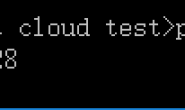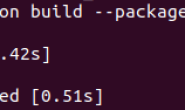转自:http://blog.csdn.net/marising/article/details/6551692
在很久以前,我写了一个系列,Python和C和C++的交互,如下
http://blog.csdn.net/marising/archive/2008/08/28/2845339.aspx
目的是解决Python和C/C++的互操作性的问题,假如性能瓶颈的地方用C来写,而一些外围工作用Python来完成,岂不是完美的结合。
今天发现了更方便的方式,就是用subprocess模块,创建子进程,然后用管道来进行交互,而这种方式在shell中非常普遍,比如:cat xxx.file | test.py 就是用的管道,另外,在hadoop中stream模式就是用的管道。
其实在python中,和shell脚本,其他程序交互的方式有很多,比如:
os.system(cmd),os.system只是执行一个shell命令,不能输入、且无返回
os.open(cmd),可以交互,但是是一次性的,调用都少次都会创建和销毁多少次进程,性能太差
所以,建议用subprocess,但是subprocess复杂一些,可以参考python docs:
http://docs.python.org/library/subprocess.html
先看一个简单的例子,调用ls命令,两者之间是没有交互的:
import subprocess
p = subprocess.Popen('ls')
再看在程序中获取输出的例子:
import subprocess
p = subprocess.Popen('ls',stdout=subprocess.PIPE)
print p.stdout.readlines()
再看看有输入,有输出的例子,父进程发送’say hi’,子进程输出 test say hi,父进程获取输出并打印
#test1.py
import sys
line = sys.stdin.readline()
print 'test',line
#run.py
from subprocess import *
p =Popen('./test1.py',stdin=PIPE,stdout=PIPE)
p.stdin.write('say hi/n')
print p.stdout.readline()
#result
test say hi
看看连续输入和输出的例子
test.py
import sys
while True:
line = sys.stdin.readline()
if not line:break
sys.stdout.write(line)
sys.stdout.flush()
run.py
import sys
from subprocess import *
proc = Popen('./test.py',stdin=PIPE,stdout=PIPE,shell=True)
for line in sys.stdin:
proc.stdin.write(line)
proc.stdin.flush()
output = proc.stdout.readline()
sys.stdout.write(output)
注意,run.py的flush和test.py中的flush,要记得清空缓冲区,否则程序得不到正确的输入和输出
 
C/C++的类似,伪代码如下
char* line = new char[2048];
while (fgets(line, 2028, stdin)) {
printf(line);
fflush(stdout);//必须清空缓冲区
}
Popen其他参数的设置,请参考python docs。




